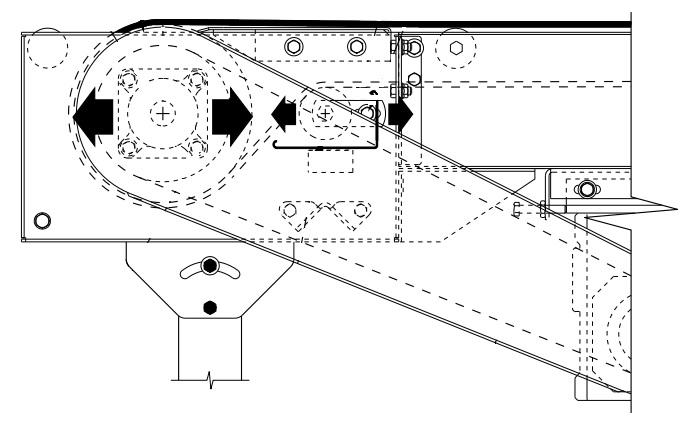
Pocket Guide to Effective Belt Tension and Preventing Belt Slip
You won’t be strapped for choice anytime soon when it comes to Hytrol belted conveyors; whether it be the ones we’ve cast a spotlight on previously such as the NBEZ, NBEZ-A, SBC, and NBLR, or any from the extensive Hytrol catalog, there’s one thing at the heart of them all – the belt.
Conveyance of a product on these units remains a pipe dream without the presence of a belt.
As such, not only are replacement parts for Hytrol conveyors paramount, e.g. the nitrile impregnated Ultimate 140 BBS belting for the SBC, but so too is their setup, such as with belt tension – which is the centrepiece of today’s post.
Before we dive into the methodology behind gauging belt tension, carrying out the act of tensioning, and other belt care practices, it’s important we first have a handle on what correct tension actually means:
The ‘Just Right’ Belt Tension
All conveyance facilities will want to achieve the goldilocks ‘just right’ effect when it comes to belt tension. But how exactly can this be defined?
Put simply, adequate belt tension is achieved when it subverts belt slip and wear on conveyor parts. Here are some of the symptoms for the extreme ends of belt tension:
Maximal Tension – one of the first signs is coming to find that your uptake of replacement parts for Hytrol conveyors, such as bearings and shafts, has accelerated. A common occurrence is to hear an unusual noise originating from your tail pulley – providing auditory feedback for increased wear, tracking issues, and inevitable failure.
Minimal Tension – this is where that belt slip we touched upon earlier can arise and can be wind up being as severe of an issue as too high of a tension. You can come to expect incorrect belt tracking, pulley lag, and failure if not corrected. One of the replacement parts for Hytrol conveyors, such as the SBC, that we provide is the Black Trackmate 533 COS-PVC belting – a solution many turn towards should belt tracking prove troublesome.
How Do I Gauge Belt Tension?
The first step in resolving an issue is to know what to look out for. The lacing, which should be checked weekly as an ideal, should be your first port of call – ensure that it is remains square with the belt and that the lacing pin stays inserted.
Should too much tension be applied, you’ll notice the belt lacing start to frail away and the belt edges begin to curl. Contrary to this, not enough tension can lead to belt discolouration and dusting, or shrill noises.
Should you find signs of damage on the lacing and/or lacing pin, we recommend getting in touch with our office in Vancouver (Delta), BC to order replacement parts for Hytrol conveyors.
Best Practice for Tensioning
Adjusting the tension for a conveyor belt needn’t be difficult, we’ve broken down the methods of best practice to following when carrying out this task:
- Remove all products from the conveyor.
- Adjust tension until belt slip no longer occurs.
- Add products incrementally while fine-tuning the tension until conveyance takes place on the heaviest load without belt slip.
- Stop conveyor and place full conveyance load onto it.
- Start conveyor, keeping an eye out for belt slippage.
- Repeat from Step 1 if slippage ensues. If not, proper tension has been reached.
Tricks of the Trade for Belt Care
How reliable something remains is correlated to how reliable the care surrounding it is upheld; conveyor belts are no different.
Time and time again, Norpak, an authorised distributor of Hytrol systems and replacement parts for Hytrol conveyors, is faced with the reality of what separates facilities that are ahead of the game from those that aren’t –maintenance compliance.
Norpak technicians are ready and able to visit you on-site across Canada, with coast-to-coast offices (Delta, BC to Port Hope, ON) we can recommend the stock of replacement parts for Hytrol conveyors you should have to circumvent lengthy downtime; no more having to second guess lead times!
Norpak Handling is a leading Canadian conveyor equipment and systems solution provider, specializing in complete project integration services including maintenance and project management.









